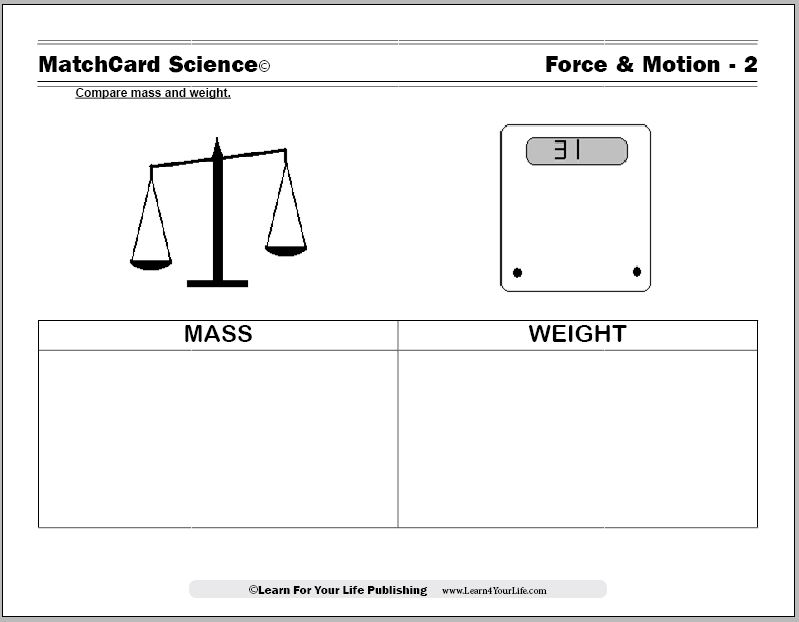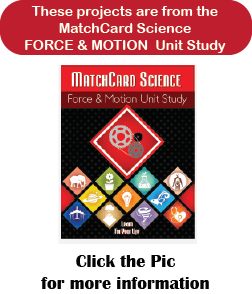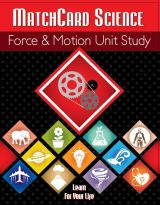Mass and Weight
The Mass and Weight MatchCard offers students the opportunity to compare the differences between weight and mass. Students also practice using a balance scale. Instructions for making a simple balance scale at home are provided.
Free Download Below


Let's Compare Weight and Mass
Objective: Compare Mass and Weight.MatchCard: Download below.
Content: Place the descriptions in the box for "mass" or the box for "weight."
Projects: Practice using different scales. Make a balance scale. Find out if air has weight.
Download and Use the Mass and Weight MatchCard


This is MatchCard #2 of the Force and Motion Unit Study. You can find more information on MatchCard Science below.
So What's the Diff?
What Is Weight?
Weight is the measurement of the force of gravity on an object.Weight changes on earth, compared to another planet or in outer space.
Why?
Since gravity is the pull of an object toward the center of another object, where gravity is weaker the weight is less. The further an astronaut gets from the earth's surface, the less he or she weighs.
What would happen if you went to live on a larger planet? The force of gravity on a larger planet would be stronger, so you would weigh more. Gravity is measured by a spring scale. Modern digital scales use the same type of measurement as a spring scale. It measures the force of the person's weight being pulled toward the core of the earth.
What Is Mass?
Mass is the measurement of the AMOUNT of MATTER in an object.Mass is the same whether it is measured on earth or in space.
Mass is measured by a balance scale. With a balance scale, the mass of the object being measured is compared to the mass of a known object. For instance, a one kilogram metal weight could be used.
Why doesn't mass change in outer space?
If we took our balance scale and our standard weights to outer space (or another planet) we would find objects have the same mass as they do on Earth. The pull of gravity will equally affect the object being measured and the standard weight. The amount of matter in the object hasn't changed, therefore it's mass is the same.
Activity Time
Using Different Scales
If you have any scales in your house, get them for this activity. Otherwise, get pictures of scales.Determine if each scale measures mass or weight.
What is the range of the scale?
What could it measure?
Predicting Weight
Place a variety of canned goods and books on your table.Pick up a one pound can. Let the student feel how heavy it is.
Pick up objects like books or tools. Can they guess the weight.
After they predict, weigh it on a scale. How close was their guess?
With practice, their ability to predict will improve.
If you have a small kitchen or postal scale that measures grams, repeat this activity with small items.
Make Your Own Balance Scale
If you do not have a balance scale at home, here is a simple on you can make:- Use duct tape to tape a wooden spoon to the counter or table top, so the stick hangs over the edge.
- Hang a wire clothes hanger on the spoon. You can also use a plastic hanger.
- Punch two holes in the top of two bathroom cups.
- Cut two equal size pieces of string or yarn.
- Thread the string through the holes in the cups and tie them so they hang on the hanger. The cups should be the same length from the hanger.
- Use one of the following as weights:
- Paper Clips 1 gram
- Pennies 2.5 grams
- BB's (Different sizes have different weights. 0.25 grams is common)
- Weigh a number of small items:
- small toys
- erasers
- small cookie
- etc
Does Air Have Mass and Weight?
Here is a simple demonstration to determine if air has mass and/or weight.- Put two balloons - both the same size - on your balance scale. They should be equal in mass and weight.
- Blow up one balloon. You can see that it has Volume.
- Now tie the blown up balloon onto the scale. Is it heavier than the flat balloon?
So Just What Is A Kilogram?
In the 18th century a kilogram was defined to be the mass of one tenth of a meter of frozen water. International Bureau of Weights and Measures created an international protype of the kilogram out of iradium and platinum in 1889. This protype is kept sealed in Sèvres, France. Later it was discovered that this was not the precise and accurate weight of one tenth of a meter of frozen water, so the Bureau of Weights and measures changed the definition of kilogram to be exactly the weight of the iridium-platinum protype. You can ask your mom to take you on a field trip to see this famous prototype of 1889.Or, if you didn’t want to spend quite so much money, you could look up the International Bureau of Weights and Measures and see what else they do. Recently it was proposed to change the definition of kilogram again. Instead of the international prototype they would use a softball sized sphere of silicon-28 to define kilogram. How would you like to be on the committee to make that decision?
More information on that proposal can be found here: new definition of kilogram. Note: the discussion on the exact weight of a kilogram gets extremely technical and if you like to follow it you might be a budding physicist. If you’re not so interested - no worries. The proposed new kilogram is so very, very, very close to the current kilogram, it won’t effect how much mass you can pack in your luggage for your field trip to France.
MatchCard Science
How To Use MatchCards

Download the FREE MatchCard Science Instructor's Guide and see how MatchCards can make building their science knowledge base fun.
Force & Motion Unit Study

It will take four to six weeks to complete the seven objectives in this Unit Study.
Download the entire Force And Motion Unit Study.
12 Science Unit Studies

Chemistry is only one of twelve complete unit studies for kids in 3rd to 8th grade.
Comprehensive objectives, hands-on projects, suggested science fair experiments, and the fun game-like MatchCards keep them interested in learning science. See all twelve MatchCard Science Unit Studies.
About Our Site
Hands-On Learning













